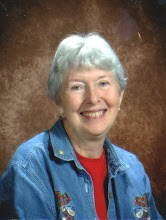Yesterday morning, after church, all the local farmers stood in groups talking about seeding and how early it's starting this year. Hearing their excitment made me consider the changes in farming practices over the last hundred years, or so.
This picture was taken in Northern California, near the site chosen for the first two book in my current series, and about the time of my work in progress. This "Combined Harvester is at work on the Tom Vestal place and powered by 32 horses and mules. I guess that would be 32 horse power? There are four men listed as operators--the driver, header tender, separator tender and roust about.
Today, one man drives a combine with maybe 360 horse power, and covers more land in a day that his predecessor did in a week. The same is true in many aspects of the farm industry. So much has changed, but there is a lot that remains the same.
No matter how hard a man works on the land, or how much modern equipment he has, the results of his labor are still in God's hands. He is always at the mercy of the weather. No rain, too much rain, a late frost, or an early one can cancel his best efforts. Equipment failures, high imput costs, or accidents can cut down the meager profit from farming.
Any of us, who is acquainted with a farmer, should keep him in our prayers. Even those who don't know farmers personally should pray. After all, farming feeds us all!







